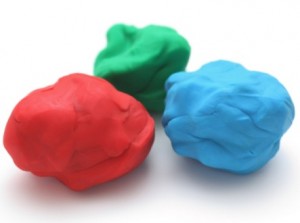Neuroplasticity and the Digital Dinosaur
Good news – “Adult brains are plastic”. That doesn’t mean they’re cheap, we lose the lids and then throw them away. It means they aren’t rigid; the grey matter isn’t set in stone. There’s elasticity, movement and amazing possibilities for learning and rewiring.
The world we now live in – virtually
It’s more than a modern world. It’s a virtual world. It’s no longer about what we can see, touch, taste, hear and smell. The focus is on everything outside and beyond the tactile world.
For the Digital Dinosaurs it’s like living inside a gyroscope – with an overload of information flinging at us from every angle, simultaneously, with that data moving too fast to read the fine print and, even if it slowed down (and it won’t), the dinos would struggle to understand because half of it is a new vernacular and no one believes in writing stuff down anymore so you won’t find the terms in a dictionary until they’re outdated, and that still won’t help because everything will be misspelt. LOLcano!
I’m only partway through the book ‘The Brain That Changes Itself’ by Norman Doidge, MD, but in the spirit of true modernity, I’m brushing aside all the seriously important content about the gobsmacking results for stroke victims, the spatially and mentally challenged, autism, OCD, phantom limb pain relief and life changing help for physical and psychological problems like we’ve never seen before – and heading straight for the ‘WHAT’S IN IT FOR ME?’ buffet.
Digital Dinos – Don’t give up.
There’s more than hope – there’s facts.
In some ways, those of us with character lines and real-life experiences may actually have a bit of an edge over the ‘natives’ in coming to grips with fast-moving innovation and technology, and it comes down to our grey matter – and I’m not talking hair.
Baby Boomers and early Gen X already have the building blocks for consecutive and orderly learning processes because of the archaic way we were educated. We know how to read maps. We memorised Nut Bush, Time Warp and/or Thriller dance steps, for pity’s sake! Don’t throw these how-to-learn skills out! You’re going to need them.
The irony of this new discovery is that for hundreds of years… a classical education often included rote memorization of long poems in foreign languages, which strengthened the auditory memory… fanatical attention to handwriting, which probably helped strengthen motor capacities…added speed and fluency to reading and speaking… The loss of these drills has been costly: they may have been the only opportunity that many students had to systematically exercise the brain function that gives us fluency and grace with symbols… their disappearance may have contributed to the general decline of eloquence, which requires memory and a level of auditory brainpower unfamiliar to us now. (p42).
Don’t let your brain get dry and crusty, like Play Dough in a cranium tub
USE IT OR LOSE IT. This is a repetitive theme across multiple studies. As it is for muscles, so it is for the brain. Apparently it’s a seriously busy place within the skull, so if you leave something on a shelf for too long, it just gets shoved out and new stock takes its place. This explains why I can’t recall but two sentences of French, although I studied it for three years in high school; and why the ability to play a simple piano scale is no longer simple, but has been lost entirely. It has something to do with ‘competitive plasticity’ (p 59-60) which makes the brain sound like a schoolyard with too many kids competing for the best playground equipment. In short: don’t neglect or throw away existing skills or previous learning if you can help it. We want to BUILD on that. Up and out, people. Bigger and better.
Sure, sure, the brain isn’t going to learn as fast as when we were 3 year olds. But it’s not dead, folks! We can still learn. And medical science is saying we can learn A LOT, with studies proving that the brain can EXTEND its functions, BUILD NEW pathways (and, we’re talking highways, not just pathways), EXPAND in multiple areas with dedication akin to corporate takeovers, no matter what age!
… as neurons are trained and become more efficient, they can process faster. This means that the speed at which we think is itself plastic.” “…not only did neurons fire faster, but … their signals were clearer… becoming better team players – wiring together more and forming groups of neurons that gave off clear and more powerful signals. (p.68)
Apparently, there’s a party waiting to happen inside our heads.
ALSO, THIS IS VERY IMPORTANT: It’s not necessarily about learning new things. It’s about learning DIFFERENT things. Even if your job is highly intellectual and brain-heavy (e.g. lawyers and doctors), or requires huge amounts of dexterity (e.g. forklift operators or professional gamers), you need to keep your brain active and learn different things:
We rarely engage in tasks in which we must focus our attention… trying to learn a new vocabulary or master new skills. Such activities as reading the newspaper, practicing a profession of many years or speaking our own language are mostly the replay of mastered skills, not learning. (p88)
So, I ask you – What is becoming tech savvy or learning how to utilise social media to market your own business, if not a new language?
When I first emigrated to Bluewire Media – from the Jurassic Park Land of having a Facebook account (set up by my kid. Hey, I know I’m not alone!) but not using it, to the Land of the Technologically Advanced where the young thangs eat Tweet Bix for breakfast, chow down on the alphabet soup of SEO, SEM and ROI for lunch, and sit down to a substantial main course of web strategy, analytics, Javascript and wireframes – I missed my Outlook email account like an old teddy; I lost my cursor continually in the no-man’s-land between the twin monitors (I know why they call it a cursor); and I genuinely thought, ‘This time, I really have bitten off more than I could chew.’
Acknowledgement:
…So I have to thank Anne Sorensen – Marketing is Us – who was a panellist at our Web Strategy Summit last year. Anne runs her own marketing business, tweets and blogs confidently and is undertaking her PHD and, when I expressed being a bit overwhelmed by the enormity of not only learning an entirely new ‘language’, but having to learn in a different way, Anne calmly and cheerfully assured me that I could not only learn, but could become accomplished at living comfortably in the world of digital innovation and supersonic information; and it who Anne who first raised the topic of neuroplasticity with me.
And she’s right. I am now a Facebook addict – mild, not yet requiring rehab. I understand the analytics reports about ‘hits, conversions, positive-to-negative ratios’. I get webpage functionality and layout, and I ‘link’ content like a beserker. I actually admire the concepts of inbound marketing and the whole globalisation ‘give your stuff away for free’ ideology. And, just last week, I think I wrapped my head around the difference between a Twitter handle and a hashtag.
HUZZAH! … I mean, WOOP-WOOP. Give up for me!
So chillax. Jump in. Have fun. And make your neurons fire up like sparklers.
Quoted from: The Brain That Changes Itself
Author: Norman Doidge, M.D.,
Version: Scribe Publications Pty Ltd (2007, reprinted 2008),
ISD 9781921215827 (pbk.) Dewey reference: 612.8




